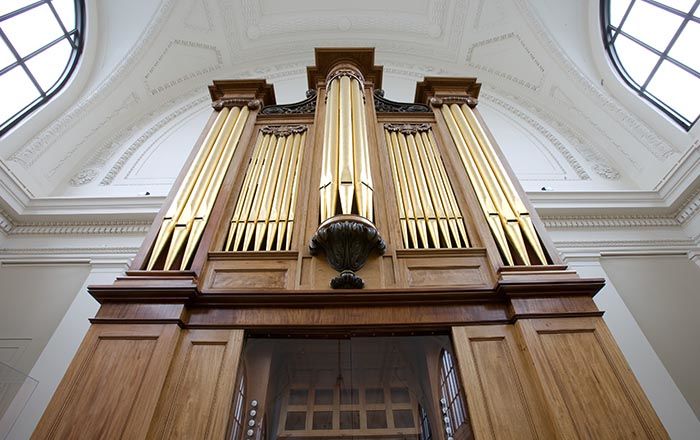Upright Piano (Ditanaklasis)
Matthias Müller German
Not on view
Matthias Müller is credited as being one of the earliest piano builders to realize the advantages of upright pianos that could be sold to middle class families, taking up less space than a grand piano and offering a better sound than a square piano. Specifically, Müller ran his soundboard all the way to the floor as opposed to other early makers who elevated the strings and soundboard on a raised stand. This arrangement caused the hammers to hit nearer the center of the strings producing a tone which was said to resemble the human voice or the tone of woodwinds. Müller gave this type of instrument the name Ditanaklasis. The Museum's example is one of a handful that survive including instruments in Nuremberg and in Berlin.
Technical description: Vertical case probably of mahogany, silk screen beneath keyboard, openwork wood bracket beneath keyboard ends; hammer strikepoint far from nut; supposedly in order to produce tone similar to English horn; ebony naturals, ivory slips over the black-stained accidental blocks; German upright action with escapement and backcheck, "L"-shaped arm, pivoted at elbow, is pushed up by key lever, lifting damper; two knee levers, left lifting dampers, right indeterminate function since associate mechanism is missing; lowest 41 notes double-strung, remainder triple-strung, lowest eight notes wound. Compass: FF - c4 (68 keys).
This image cannot be enlarged, viewed at full screen, or downloaded.

